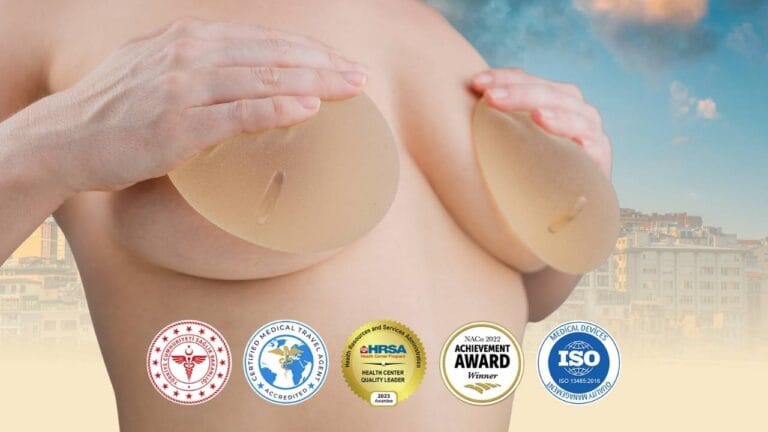Understanding Breast Lift Scars Lollipop vs Anchor incisions is the most important step before surgery, as the length and shape of the scar are dictated by your anatomy, not your surgeon’s preference. This guide explains the trade-off: trading sagging for scarring, and which incision is necessary for your degree of ptosis (sagging).
Clinic Care Center: Expert Warning (Scar Choice)
Patients often ask for a Lollipop scar when they anatomically require an Anchor scar. The type of scar is dictated by the degree of sagging (ptosis) and the amount of skin that must be removed. A surgeon who promises a small (Lollipop) scar to a patient with severe ptosis risks delivering an incomplete lift and a stretched, poor result. The Anchor scar (Lollipop + horizontal incision) is the gold standard for severe ptosis because it is the only way to tighten the skin in two directions.
Lollipop vs. Anchor Incisions: Suitability and Scar Extent
The severity of sagging determines the necessary technique and resulting scar pattern. The scar length is dictated by the severity of sagging.
| Feature | Lollipop Scar (Vertical) | Anchor Scar (Inverted-T) |
|---|---|---|
| Scar Shape | Around areola + Vertical to crease. | Around areola + Vertical + Horizontal (under the breast). |
| Ptosis (Sagging) Grade | Mild to Moderate (Grade I/II). | Severe Sagging (Grade III/IV) / Massive excess skin. |
| Longevity | Good, limited risk of recurrence. | Maximum longevity and lift correction. |
| Trade-off | Less scarring, but limited lift capacity. | Maximum Scarring, but maximum reshaping and tension removal. |
Potential Risks & Realistic Expectations
We must be transparent: there is no ‘guaranteed’ outcome or ‘scar-free’ surgery. The primary risks are: (1) Scar Widening/Hypertrophy: All breast lift scars are permanent and require 12-18 months to fade. (2) Loss of Nipple Sensation: This is a risk with any vertical incision (Lollipop or Anchor). (3) Asymmetry or Recurrence. We cannot ‘guarantee’ a scar will be invisible. The realistic expectation is that you are trading sagging skin for a permanent scar that is well-placed and fades over time.
Frequently Asked Questions (FAQ)
Which breast lift scar heals the best?
The scar around the areola typically heals the best, while the vertical and horizontal components (Anchor) may take longer to fade.
How long does it take for breast lift scars to fade?
Breast lift scars are permanent, but they fade significantly, becoming a thin, pale line over a period of 12 to 18 months.
Will I lose nipple sensation after a breast lift?
Loss of nipple sensation is a real risk; while often temporary, some change in sensation can be permanent after any vertical incision.
Is an Anchor scar mandatory for severe ptosis?
Yes, for severe sagging (Grade III/IV), the Anchor (inverted-T) scar is mandatory, as it is the only way to remove enough skin for a good result.
What is the ‘Lollipop’ scar?
The “Lollipop” scar involves a circumferential incision around the areola and a single vertical line extending down to the breast crease.
Can I have a lift with implants at the same time?
Yes, combining a lift (mastopexy) with augmentation is a common procedure known as an Augmentation-Mastopexy.
When is the final breast lift result visible?
The general shape is visible after 3 months, but the final, stable shape and scar maturation take a full 12 months.
What is the difference between vertical vs anchor scar breast lift?
The vertical (Lollipop) scar lacks the horizontal incision and is only suitable for patients needing a moderate lift.
What is the biggest risk of the Anchor scar?
The biggest risk is poor healing at the ‘T-junction’ (where the vertical and horizontal scars meet), which is prone to widening.
Is the decision for scar shape dictated by patient preference?
No, the scar shape is dictated by the degree of sagging and the amount of skin that needs to be surgically excised.
Ready for an Honest Assessment of Your Scarring?
The best scar is the one that achieves the result you need. The experts at Clinic Care Center will determine the required incision technique based on your anatomy. Contact us today for a professional evaluation and a realistic discussion of your scars.
Also Read:
Breast Augmentation
Breast Lifting
Breast Reduction
Breast Implant Removal

